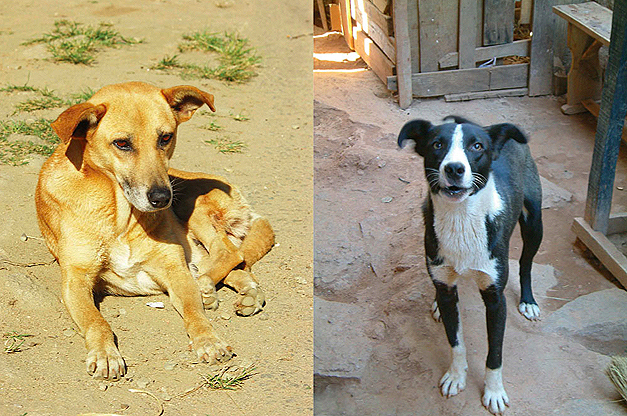Who left the dogs out?
Genetic study finds no trace of ancient colonisers' canines in Madagascar
Their migration spanned half the globe and their culture was spread across the Pacific and Indian Oceans; but in Madagascar, the ancient Indonesians left behind a mystery.
What happened to their dogs?

In his latest research on the origins of dogs around the world, Peter Savolainen, a canine genealogy authority at Stockholm's KTH Royal Institute of Technology, set out to examine the genetic connection between dogs in Madagascar and the pets of ancient settlers from Indonesia. But to his team's surprise, no trace of Indonesian ancestry could be found among Madagascan dogs.
Instead, Madagascan dogs all appear to trace their heritage entirely from Africa.
Savolainen says that the findings offer little clue as to what happened to the Indonesian dogs that most likely sailed to Madagascar 1,500 to 2,000 years ago.
"It's a mystery," Savolainen says of the study, which sampled DNA of 145 dogs from Madagascar and 184 from the African mainland. "We were surprised when we saw the results. We expected 100 percent or 50 percent ancestry from Indonesia—but it was zero percent".

In ancient times, the expeditions of Indonesians typically included domestic animals, such as pigs, chickens, and of course, man's best friend. Along with their Austronesian culture and DNA, the Indonesians introduced their dogs' genes into populations wherever they settled. This canine DNA can still be found in Hawaii, Southeast Asia, the Cook Islands and New Zealand, among other places.
"Dogs, together with pigs and chicken, were important domestic animals in the Austronesian culture," he says. "So it would be expected that dogs were brought in the colonisation of major new areas, and a seemingly total absence in Madagascar of dogs with Austronesian heritage is surprising.
One possible explanation doesn't quite hold up, Savolainen says. If the migration from Indonesia to Madagascar was "a limited event" which brought only a small number of colonisers in a few voyages, then why does the human population of the island have such a high diversity of maternal and paternal lineages with Indonesian origin?
"This indicates that there was an introduction of large numbers of people, possibly in several successive waves rather, than a severe genetic bottleneck in the founder population," he says.
Savolainen offers a more likely, if unappealing scenario. "It is possible that if the dogs were brought along on these long journeys, they died from the hardship, or were used as a food source."
Indonesian dog DNA isn't the only missing trace of the Indonesian diaspora in Madagascar. As Savolainen points out, the Madagascan culture is mainly influenced by Africa and, except for the language, few clear contributions remain from the initial Indonesian culture."
The study was published on May 20 in Royal Society Open Science . It was co-authored by Savolainen with colleagues from KTH, as well as Université d’Antananarivo, Madagascar; Stellenbosch University, South Africa; National Institute of Genetic Engineering and Biotechnology (NIGEB), Iran; and University of Porto, Portugal. Savolainen is Associate Professor in Evolutionary Genetics at KTH Science for Life Laboratory.
David Callahan
For more information, contact Peter Savolainen at savo@biotech.kth.se, or +46 (0) 8-524 81 422.